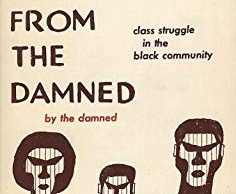Compassionate Feminism
A practice in compassion is, particularly for myself as a woman, an act of feminism. If I turn my practice inward, if I look to act in ways that do not harm me (ahimsa in Sanskrit) then I am less likely to participate or condone actions rooted in greed. I feel better. As simple as that sounds. But with this comfort comes less of the inclination to see discomfort in others. Compassion returns me to the root, the real root, of feminism. Feminism is a set of political philosophies and practices rooted in the respect and love for women. Clearly, the first step for any woman, then, is to love herself. However, this love is no easy thing, as simple as it may be to label. Our world continues to derail us, throwing into our path distractions that inspire our vision outward, disconnecting us from the core practices that may heal us and, inevitably, others.
The distraction with which I most grapple, at least in this America in which I live and witness, is our cultural proclivity for destruction. Yes, there are always studies linking our pastimes, and particularly those of our children, to increasing violence. Yet, our advertising reinforces our lack, of happiness, satisfaction, etc., while offering completely unsuccessful remedies. The government relies on the very fear and vulnerability that makes it difficult to walk through this world with compassion but easier to perpetuate war and greed in the name of the nation. As history repeats itself, our pop entertainment weighs in with glamorous (Mad Men, Desperate Housewives, Sex & the City 2, etc.) and remarkably unglamorous (Two and a Half Men, The Jersey Shore, insert Tyler Perry production name here) misogyny, and in strictly psychoanalytic terms, destruction of the mother. Yet, and differently than our Austrian theorist friend, we can consider this type of destructive behavior not only a matter of killing she who mothered us, but eliminating in the mother that which reminds us most of ourselves.
I am not better. I, too, struggle with an eating disorder, sexual trauma and overall fear of success. I spent months of my life unable to see clearly, swinging between intoxication and hangover. I moved through much of my 20s within this and other ebbs and flows of symbolic self-emulation, attempting to pull the pain to the surface where I could see and control it, denying the extent of its roots. I am a woman of color, and study the lives of those like me but before me, and particularly the way that they, too, struggled with mores that excluded them, and thus refused to protect them. Thus, I refute none of the violent cultural, global, and personal histories that contribute to our here-and-now; my own work in literary studies remains perpetually past-bound. And while I am certainly of the tree-hugging sort, I am not religious and I wonder about the practical ways around, through or below this mess we seem to have made. I desire alternatives for my nephew, who only recently joined the world and deserves none of this man-made ugliness.
The simple answer to the question of violence is the promotion of personal responsibility and the practice of compassion, particularly starting with the self. On May 17, 2011, University Heights Public School, a London elementary school, was “recognized as the first official compassionate school in the world” by Canadians for Compassion, a London-based organization affiliated with the 2009 Charter for Compassion. This recognition, while appreciated, was deemed unnecessary by the principal of the school, Carol Edy. Instead, Edy suggests that her students’ work—which includes a penny drive for an Afghan school and acts of kindness which number 1,000 and cover one wall of the school—live as reward enough. The principal, and the leader of this initiative, suggests that the children’s actions towards kindness and empathy are most lasting within the children themselves. The school, as a unit, is therefore most rewarded by a more compassionate student body. It is not for reward, then, that Principal Edy, her staff and her elementary students practice compassion. It is, in the principal’s words, because “it is the right thing to do.”
Compassion, like feminism, is simply the “right thing to do.” It is, according to the Oxford English Dictionary, from the French, and means “suffering together with another, participation in suffering; fellow-feeling, sympathy.” It is a state of being implicitly connected to others. Compassion is, then, always relational and relies on our empathy if not our actual and mutual experience. I would suggest then that it takes a step beyond what is “right” and suggests something inevitable, or a state that exists whether we choose to surrender to the set of emotional experiences allowing us to closely feel what another has, understanding their joys and hardships as we, too, have. So that to act compassionately is, instead, really a practice of surrendering to the feelings in our individual, cultural and global memories. It is through these principles that I also recognize the practice of feminism—the intersection of philosophy, politics, and the practice of self-love and respect.
And while the principal of University Heights may not need recognition of her school’s efforts, the acknowledgement demonstrates that the Charter for Compassion founder Karen Armstrong’s vision for change continues to live. It has been two years since the Charter for Compassion was first made public. In 2008, Armstrong won the TED prize from the nonprofit organization that derives its name from bringing together representatives from three specific areas: “Technology, Education, Design.” Recognized as a “religious thinker” and prolific writer, having produced 20 published works in comparative religion and history, Armstrong not only gained a cash award, but more importantly, TED granted her one wish to help make the world a better place. It was during her TED acceptance speech that Armstrong announced that she desired to found a project that would encourage a global community as an antidote to the misuse within and of religion and faith. The following year, the Charter was born into the public, asking that people reconsider their various moral centers and turn an eye back to Compassion as the optic for which they might interact with one another. Armstrong, a former Catholic nun, is only partly concerned with religion. More, her project intends to reconsider how we utilize religion and what principles found our motivations, writ large. The Charter for Compassion specifically asks people to reconsider not only their religion, but also their morality.
We therefore call upon all men and women ~ to restore compassion to the centre of morality and religion ~ to return to the ancient principle that any interpretation of scripture that breeds violence, hatred or disdain is illegitimate ~ to ensure that youth are given accurate and respectful information about other traditions, religions and cultures ~ to encourage a positive appreciation of cultural and religious diversity ~ to cultivate an informed empathy with the suffering of all human beings—even those regarded as enemies.
The Charter asks for radical tolerance, and suggests that those who hold beliefs couched in particular religions return to those religious texts. Recent events and trends in our American culture return me to the message of this Charter and the greater concept of compassion practiced in daily life. I remained stunned by celebrations of brutal death, the return to “blaming the victim” and the increased sense of violence as normalcy, passed from one generation to the next. I suggest that these trends of ruin are not merely outward facing, but rather that it is the increased self-destructiveness in our culture that motivates our desires and realizations of hurting others.
In her most recent book, Twelve Steps to a Compassionate Life, published in 2010 under the auspices of the Charter for Compassion, Karen Armstrong suggests that the start of a practice of compassion involves studying the writings of the compassionate. For those who know addiction, walking those 12 steps is anything but an easy journey. Through this model, Armstrong offers a historical trek through religious and philosophical traditions and texts concerning the subject to remind us, in a way that harkens back to Heather Talley’s discussion of feminism and practice, that actions must at least mean to support the study. Armstrong not only gives her readers a familiar number of steps toward tapping into empathy, but she reminded this reader that the egoism, individuality and self-centeredness that seem to motivate so many of our cultural standards are not necessarily antithetical to the practice of compassion. Certainly one must, at all times, start with the self in order to then pay it forward.
Finding satisfaction from within gives us the potential to desire less from without. I think there is a Commandment about that one—something about coveting and a neighbor’s servant. Seriously, one can choose to concentrate upon compassionate language within the religious texts with which they are most comfortable (the Qur’an, The Bible, The Upanishads, The Lotus Sutra, and more). And one can find herself following The Golden Rule (yes, I went there), and simply tapping into her innate sense of empathy. Realize it now: empathy can hurt. Still, it is only through shedding the distractions, sitting in the hurt or the joy—don’t we want to sit in the joy?—that we have the opportunity to share our humanity with one another.
_________________________________________
 Nicole A. Spigner is a Ph.D. student in Vanderbilt University’s English program. She received her M.A. and B.A. in English from University of Pennsylvania. Her research interests include the intersections of 19th Century African American and Caribbean literature and classical Greek and Roman texts, depictions of conjure women in 19th and 20th Century African American and Caribbean Literature, as well as black feminist theory, New World syncretic religions, Vedic philosophy and African Diasporic folklore.
Nicole A. Spigner is a Ph.D. student in Vanderbilt University’s English program. She received her M.A. and B.A. in English from University of Pennsylvania. Her research interests include the intersections of 19th Century African American and Caribbean literature and classical Greek and Roman texts, depictions of conjure women in 19th and 20th Century African American and Caribbean Literature, as well as black feminist theory, New World syncretic religions, Vedic philosophy and African Diasporic folklore.




12 Comments